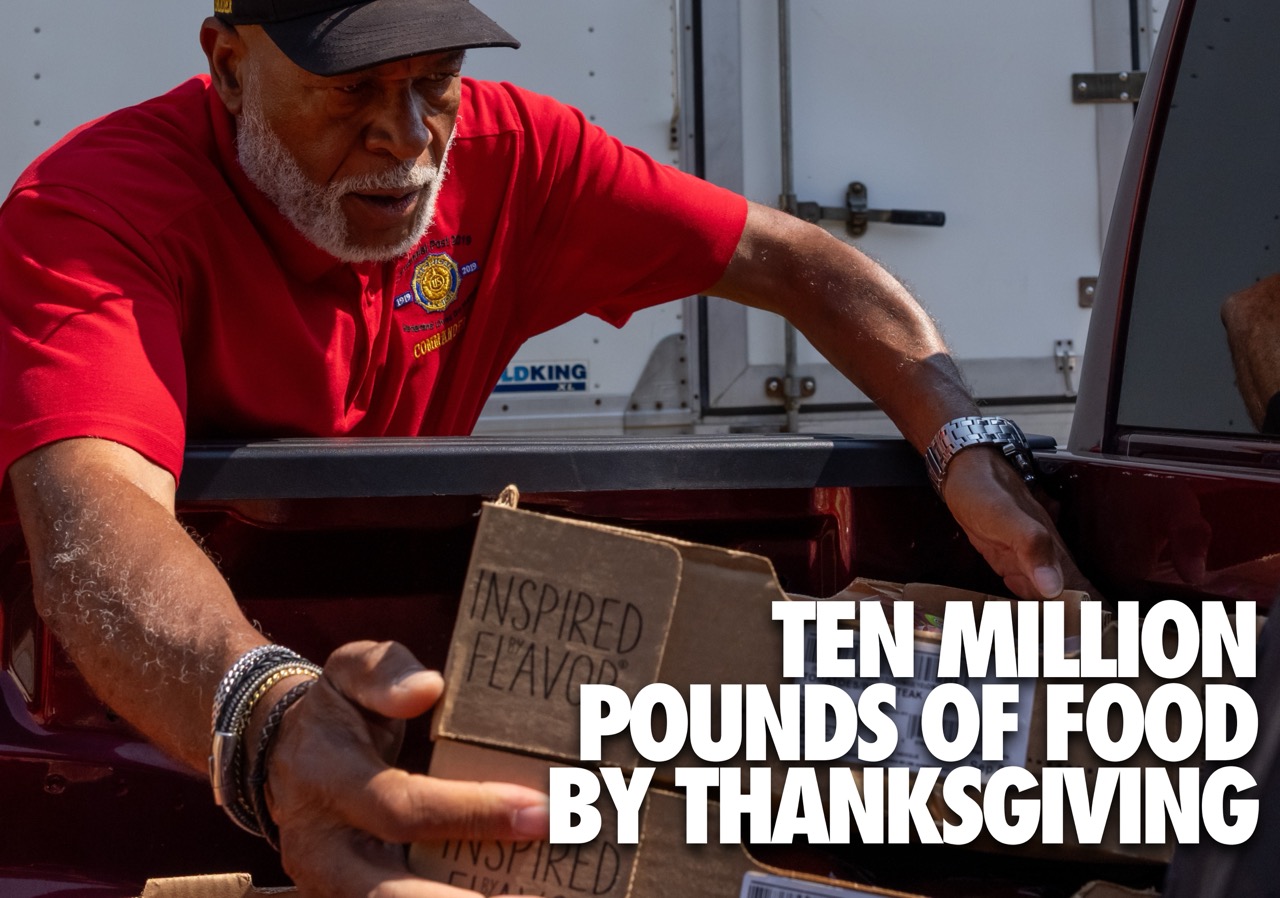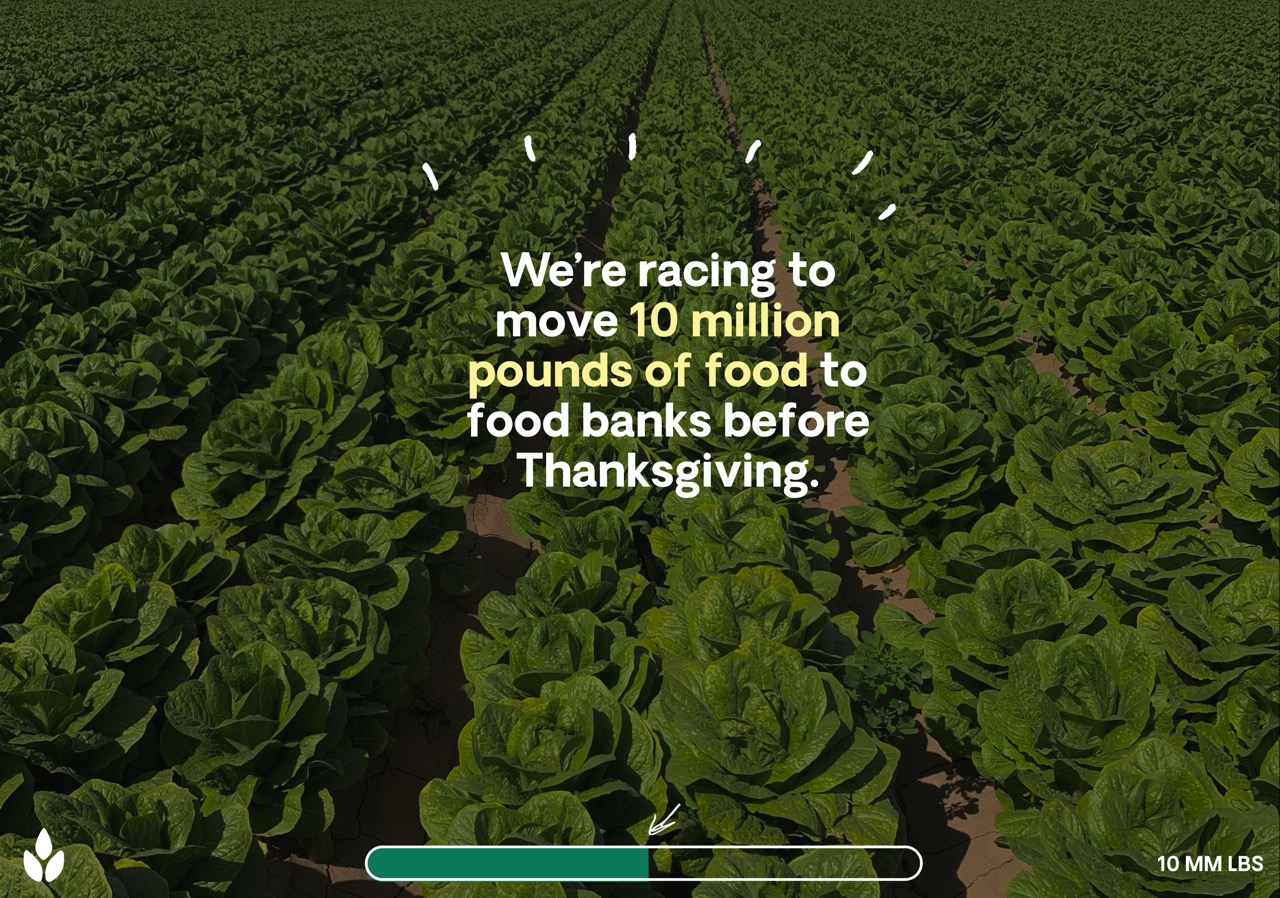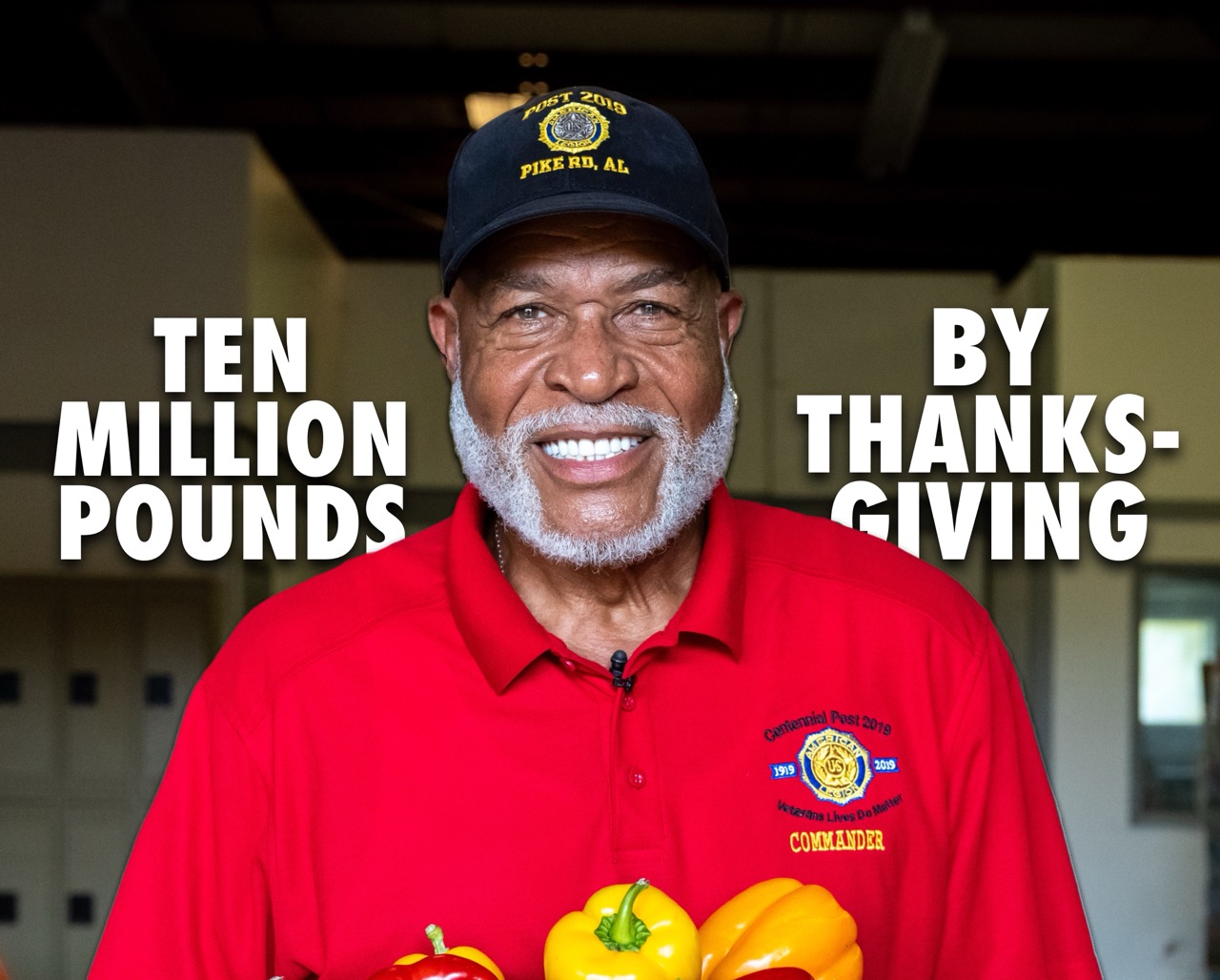Stella Delp’s first role at The Farmlink Project was the “lettuce lady,” calling farms to inquire about surplus greens.
After being sent home from her sophomore spring at Stanford because of the COVID-19 pandemic to complete the rest of the year’s classes over Zoom, Stella wanted to help the communities around her. When friends Aidan Reilly and James Kanoff came together to found The Farmlink Project, she was immediately on board.
“Two big things that stood out to us were this huge amount of surplus on farms being magnified by the media due to the shutdowns and at the same time a new cohort of individuals and families facing food insecurity during a pandemic. There was this jarring amount of food going to waste and families just scraping by to feed themselves,” said Stella. The team started off small, calling farmers to see if they had surplus produce and arranging transportation for food bank deliveries.

As the organization grew and took on new members, Stella transitioned away from lettuce, working as Head of People Operations. Today, she is taking a gap year from Stanford to serve as the Chief of Staff, in charge of managing the 185 full-time team members that facilitate the deliveries between farms and food banks and keep Farmlink running. Working closely with team leads, she tracks the execution of goals, addresses any issues with operations in real time, and ensures that The Farmlink Project’s mission of fighting food insecurity and food waste is central to everyone’s daily work.
“I really like to facilitate community and connection and people working together,” she expressed. “It’s kind of been a natural role for me.”
At Stanford, Stella studies human biology with a concentration in neurobiology supporting cognitive and behavioral health, exploring the ways that neural mechanisms influence the way we think and behave. For her, it is an area of study at the cross-section between the social sciences and the hard sciences, allowing her to explore how change can be motivated through science, empathy, and kindness.
Though her day-to-day responsibilities vary, her central goal is always to facilitate a collaborative and supportive internal community.
“A challenge is making sure everybody is heard and everybody gets taken into account when making important decisions. We don’t have a top down structure because we believe that our best ideas come from the people doing the day-to-day work,” she said. “But looking at how Farmlink can be the most effective and efficient boils down to people and individuals working together.”
Ultimately, Stella’s favorite part of her work is seeing how much amplifying individual voices and creating a sense of community can impact what the team as a whole is able to achieve.
“Looking back at it when it was just six of us trying to figure out how to rent a Penske truck, we had no idea that it was gonna become something that so many people would give their time and energy and hearts to,” she said. “And now that feels like a powerful thing.”

< Back
Stella Delp’s first role at The Farmlink Project was the “lettuce lady,” calling farms to inquire about surplus greens.
After being sent home from her sophomore spring at Stanford because of the COVID-19 pandemic to complete the rest of the year’s classes over Zoom, Stella wanted to help the communities around her. When friends Aidan Reilly and James Kanoff came together to found The Farmlink Project, she was immediately on board.
“Two big things that stood out to us were this huge amount of surplus on farms being magnified by the media due to the shutdowns and at the same time a new cohort of individuals and families facing food insecurity during a pandemic. There was this jarring amount of food going to waste and families just scraping by to feed themselves,” said Stella. The team started off small, calling farmers to see if they had surplus produce and arranging transportation for food bank deliveries.

As the organization grew and took on new members, Stella transitioned away from lettuce, working as Head of People Operations. Today, she is taking a gap year from Stanford to serve as the Chief of Staff, in charge of managing the 185 full-time team members that facilitate the deliveries between farms and food banks and keep Farmlink running. Working closely with team leads, she tracks the execution of goals, addresses any issues with operations in real time, and ensures that The Farmlink Project’s mission of fighting food insecurity and food waste is central to everyone’s daily work.
“I really like to facilitate community and connection and people working together,” she expressed. “It’s kind of been a natural role for me.”
At Stanford, Stella studies human biology with a concentration in neurobiology supporting cognitive and behavioral health, exploring the ways that neural mechanisms influence the way we think and behave. For her, it is an area of study at the cross-section between the social sciences and the hard sciences, allowing her to explore how change can be motivated through science, empathy, and kindness.
Though her day-to-day responsibilities vary, her central goal is always to facilitate a collaborative and supportive internal community.
“A challenge is making sure everybody is heard and everybody gets taken into account when making important decisions. We don’t have a top down structure because we believe that our best ideas come from the people doing the day-to-day work,” she said. “But looking at how Farmlink can be the most effective and efficient boils down to people and individuals working together.”
Ultimately, Stella’s favorite part of her work is seeing how much amplifying individual voices and creating a sense of community can impact what the team as a whole is able to achieve.
“Looking back at it when it was just six of us trying to figure out how to rent a Penske truck, we had no idea that it was gonna become something that so many people would give their time and energy and hearts to,” she said. “And now that feels like a powerful thing.”

Stella Delp
Chief of Staff at The Farmlink Project
Stella Delp’s first role at The Farmlink Project was the “lettuce lady,” calling farms to inquire about surplus greens.
After being sent home from her sophomore spring at Stanford because of the COVID-19 pandemic to complete the rest of the year’s classes over Zoom, Stella wanted to help the communities around her. When friends Aidan Reilly and James Kanoff came together to found The Farmlink Project, she was immediately on board.
“Two big things that stood out to us were this huge amount of surplus on farms being magnified by the media due to the shutdowns and at the same time a new cohort of individuals and families facing food insecurity during a pandemic. There was this jarring amount of food going to waste and families just scraping by to feed themselves,” said Stella. The team started off small, calling farmers to see if they had surplus produce and arranging transportation for food bank deliveries.

As the organization grew and took on new members, Stella transitioned away from lettuce, working as Head of People Operations. Today, she is taking a gap year from Stanford to serve as the Chief of Staff, in charge of managing the 185 full-time team members that facilitate the deliveries between farms and food banks and keep Farmlink running. Working closely with team leads, she tracks the execution of goals, addresses any issues with operations in real time, and ensures that The Farmlink Project’s mission of fighting food insecurity and food waste is central to everyone’s daily work.
“I really like to facilitate community and connection and people working together,” she expressed. “It’s kind of been a natural role for me.”
At Stanford, Stella studies human biology with a concentration in neurobiology supporting cognitive and behavioral health, exploring the ways that neural mechanisms influence the way we think and behave. For her, it is an area of study at the cross-section between the social sciences and the hard sciences, allowing her to explore how change can be motivated through science, empathy, and kindness.
Though her day-to-day responsibilities vary, her central goal is always to facilitate a collaborative and supportive internal community.
“A challenge is making sure everybody is heard and everybody gets taken into account when making important decisions. We don’t have a top down structure because we believe that our best ideas come from the people doing the day-to-day work,” she said. “But looking at how Farmlink can be the most effective and efficient boils down to people and individuals working together.”
Ultimately, Stella’s favorite part of her work is seeing how much amplifying individual voices and creating a sense of community can impact what the team as a whole is able to achieve.
“Looking back at it when it was just six of us trying to figure out how to rent a Penske truck, we had no idea that it was gonna become something that so many people would give their time and energy and hearts to,” she said. “And now that feels like a powerful thing.”

.png)








.svg)
.svg)
.svg)